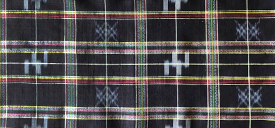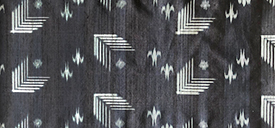The patterns woven in take design motifs from birds, flowers and other animals and plants, objects in the sky such as stars and clouds, or daily commodities such as scissors or coins, and the variation counts up to six or seven hundreds. They are referred to with Okinawan dialects such as tuigwaa or toni, and include subjects taken from the daily life in the tropical island, including humorous ones such as dog’s footprints, pig’s feed tray or human eyebrows, all of which bring smiles to viewers' faces. Such patterns are combined and woven into a piece of cloth.

